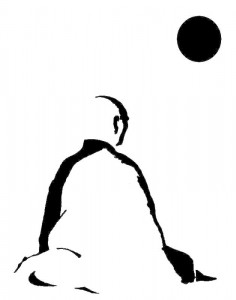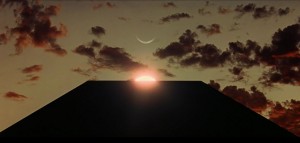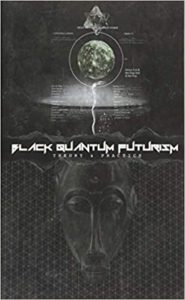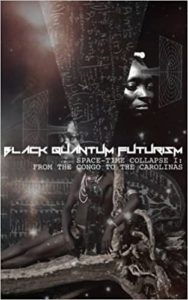Does a Flying Saucer Have Buddha Nature?
In The Invisible College, Jacques Vallee noted that situations reported by UFO witnesses and abductees “often have the deep poetic and paradoxical quality of Eastern religious tales.” In a 1978 interview with Fate magazine, he elaborated on the insight that UFO encounters are like koans: “If you’re trying to express something which is beyond the comprehension of a subject, you have to do it through statements that appear contradictory or seem absurd. For example, in Zen Buddhism the seeker must deal with such concepts as ‘the sound of one hand clapping’—an apparently preposterous notion which is designed to break down ordinary ways of thinking.”
 For Vallee, the absurd and even ridiculous “meta-logical” quality of messages and scenarios reported in the close encounter literature suggest UFOs are a kind of “control system” that is manipulating our consciousness and history—either deceiving us or trying to elevate us or some mix of both. I’ve always liked this idea of treating UFO reports, and our own UFO experiences, as koans (and I think, whatever “their” intent, just following the remarkable chains of thought inspired by UFOs, or the paranormal in general, can be a gnosis, as Jeffrey Kripal argues).
For Vallee, the absurd and even ridiculous “meta-logical” quality of messages and scenarios reported in the close encounter literature suggest UFOs are a kind of “control system” that is manipulating our consciousness and history—either deceiving us or trying to elevate us or some mix of both. I’ve always liked this idea of treating UFO reports, and our own UFO experiences, as koans (and I think, whatever “their” intent, just following the remarkable chains of thought inspired by UFOs, or the paranormal in general, can be a gnosis, as Jeffrey Kripal argues).
The earliest Zen koans did not just consist of direct questions like “the sound of one hand.” Many were records of interactions, “public cases” (the literal meaning of koan) in which past masters and their disciples tested each other, using provocative actions or answers to questions. The most famous and widely used koan in the Rinzai Zen tradition is known as Mu, the Chinese word for “no.” It’s relatively short, as koans go:
A monk asked ZhaoZhou, “Does even a dog have Buddha nature?”
Zhaozhou said, “No.”
Such an exchange, which in this case defies what “everyone knows” (that all sentient beings have Buddha nature) initially provokes endless logical interpretations—the master is joking, the master is being ironic, the master’s “no” isn’t an answer but an admonishment (the way you might admonish a dog) for the monk’s asking of the question, and so on. The student assigned this koan goes back and meditates on it at length—chews it rather the way a dog chews a bone. In regular interviews with the master, the student shows what he or she has come up with, and usually is told to go back and continue working. Eventually after weeks or months or years, the student’s mind, maddened and frustrated, exhausts all the hundreds of logical possibilities, and at this point may be ripe for a nonconceptual understanding to break through and wash out all that logic, like the bottom dropping out of a bucket. This is the breakthrough moment of satori.
There often wasn’t a single correct answer to the koan, but the student would produce some appropriate response showing his or her newly altered state of mind, and the master would see that the student had authentically broken through. In no case is the test passed by providing a conceptual, logical sort of response or an intellectual interpretation like you could express in a report. Zen is beyond logic. I’ve read that in the case of “Zhaozhou’s Mu,” some students who have had a real breakthrough just happily bark “No!” at their teacher.
In other words, a koan was a meditation tool, but it was also a test. A real master can always tell when the response is authentic, by a student who has had an enlightenment experience, or if it is a pretense or imitation.
In 2001, Arthur C. Clarke envisioned an alien race using its technology both to cultivate us (the slab that appears at the Dawn of Man to teach us violence and tool use) and to serve as a sentinel, an automatic alarm system to alert them once we’d arrived at a certain technological threshold (the slab millions of years later, on the moon). Wherever the intelligences interacting with us via UFO encounters come from, and whether or not any of them have a behavioral modification plan for us, they may be patiently testing our readiness for a more spiritually and philosophically mature, “meta-logical” interaction. In our persistence in taking the whole phenomenon literally, in trying to provide rational explanations and, as Vallee put it, “kick the tires,” we display the same obstinate conceptualist, materialist limitations shown by Zen monks parading out their various logical interpretations of “No” … until they eventually get it.
I think it may be necessary to go through this “nuts and bolts” phase—thinking about where UFOs come from, their propulsion systems, government coverups, etc., producing all our clever, logical speculations—in order to wash out our own minds. Once we do that, the pointlessness of our conceptual thinking may finally hit us and we will finally be able to just quietly, smile, and nod, like the disciple Kashyapa when the Buddha wordlessly held a flower up—the origin of the Mind transmission that eventually became Zen.
(I sometimes wonder if some in the UFO community who have largely fallen silent, such as Vallee, are already there in some sense, their relationship to the phenomenon more spiritually advanced than the rest of us suspect.)






http://ufodisclosurecountdownclock.blogspot.com/2013/10/thinking-about-ufos.html Hi Eric – I wanted you to know that you have fans of your thinking process out there in internet land.
Welcome back.
Rick Phillips